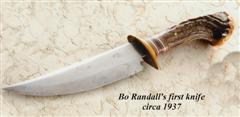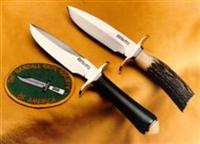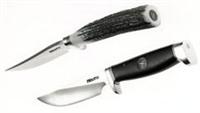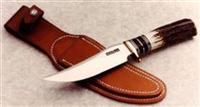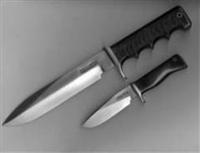Tony,
If you go to "Wikipedia" and type in "Parkerizing", there is a technical description on how its done. I've been away from it for about fifteen years, so the process has probably changed and upgraded.
I believe the item (gun{stripped}, knife, etc.)was dipped into the tanks filled with parkerizing solution (still available from Brownells in Iowa).
Fifteen years ago, the drawback to parkerizing was that the solution was good for only one project. A gunsmith couldn't keep the solution for a couple of days or more as he could with regular hot blueing solution.
From 1975 until 1999, we supplied Randalls to men of the 82nd ABN DIV, the 5th & 7th SFG(A) here at Fort Bragg. We, upon request, would take a Randall #1, #14, #15, or #18 to the cabinet and bead-blast it, using aluminum-oxide glass beads under air pressure. Glass bead blasting provides a smoother (less coarse)finish than sand blasting. Then we'd fire up the tanks, and dip only the blade in the hot blueing solution.
Basically, Parkerizing & "BB&B" ("Bead Blast & (hot) Blue") provided the item with two advantages. 1) Minimize light reflection to the "bad guys" 2) Allowed oil to adhere & remain longer to coated metal surfaces.
New processes including epoxy paints and other "mixes" may have eclipsed the parkerizing process, I don't know.
It was very popular in the 20th Century beginning in WWII and beyond. Look at M1 Garands, M1 Carbines, M14's, 1911-A1 pistols, M-3 trench knives, etc.
Other gunsmiths might correct my foggy mind, I hope.
Check out Rick's thread on the Model 18 with new "coat".
Edited by Buck Buchanan (12/21/10 07:04 PM)
Edit Reason: correct error in description
_________________________
Buck Buchanan, RKCC #CM-16, RKS #1003
NRA LIFE
NMLRA LIFE
Authorized Randall Dealer
buck100_10x@icloud.com


